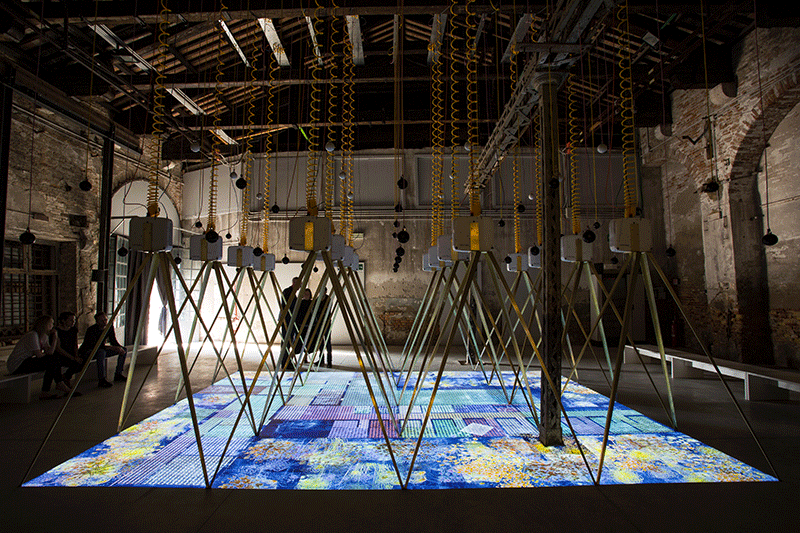In the Autumn of 2015, Yeoryia Manolopoulou and I were selected by the Arts Council and Culture Ireland as Co-Commissioners/Curators of Ireland’s entry to the Venice Biennale 2016. We were inspired by the brief for the Biennale – Reporting from the Front – and welcomed the opportunity to reflect on our own experience as architects working to ‘improve the quality of life [of the people we design for] while working on the margins, under tough circumstances, facing pressing challenges’.
As architects, we continually strive to identify and understand the needs, aspirations and capacities of our clients. A successful design accommodates and interprets these within a seemingly simple solution. The difficulty for the architect in designing for dementia is that it can be difficult to conceive of the world as experienced by the people who will inhabit the building.
 Losing Myself – The Irish Entry to La Biennale di Venezia 2016. Copyright Riccardo Tosetto.
Losing Myself – The Irish Entry to La Biennale di Venezia 2016. Copyright Riccardo Tosetto.
From 1999–2014, Niall McLaughlin Architects worked with dementia sufferers and those who care for them. We wanted to understand how architecture could work to improve the quality of their lives; to connect them to the world and to create a situation of ease in the community. We collaborated extensively with the Alzheimer’s Society of Ireland as they struggled to conceptualise, commission, construct and inhabit their first new building: the Alzheimer’s Centre in Dublin. The building was to be a test case for future developments, both in its successes and its failures.
The Biennale offered a chance to revisit this particular building, and to continue to seek answers to questions that we had asked ourselves time and again: questions about memory and place, perception and space, projection and the passage of time. We recommenced conversations we had been having with neuroscientists at University College London, and spoke to experts at Trinity College Dublin and the Dementia Services Development Centre at the University of Stirling. We met with philosophers and psychologists. We asked people who work at the Alzheimer’s Centre and families of people who use the building what they thought of it, what they thought worked and what didn’t. We recorded this research on a website, www.losingmyself.ie.
Using what we had learned, Yeoryia and I sought to create an immersive installation in the Arsenale in Venice that could in some way represent the reality of spatial experience for a person with dementia. When an architect draws a plan, it describes all of the parts of the building at once: a vantage point that is never experienced by the occupant. We wanted to create drawings from the perspective of inhabitation. Through a projected animation, we have overlaid drawings that describe the experiences of multiple occupants at once, and over time. The medium allows us to depict the ‘continuous present tense’ that seems to characterise a condition which erodes the individual’s ability to project and remember. The drawing on the floor is accompanied by a soundscape built of layers from the present and the past. Aspects of this soundscape reflect and describe the activity of the moving drawing. However, familiar sounds from the past are also introduced, creating a sense of comfort with an undercurrent of confusion.
 Losing Myself – The Irish Entry to La Biennale di Venezia 2016. Copyright Niall McLaughlin Architects and Yeoryia Manolopoulou.
Losing Myself – The Irish Entry to La Biennale di Venezia 2016. Copyright Niall McLaughlin Architects and Yeoryia Manolopoulou.
In the last year, I have come close to answering some of the questions I have had about the brain, how we understand space, and how this understanding is changed by dementia. As is often the case, however, the process has raised as many questions as it has answered. I look forward to continuing to seek answers through our research, and when a version of the installation tours Ireland in 2017.